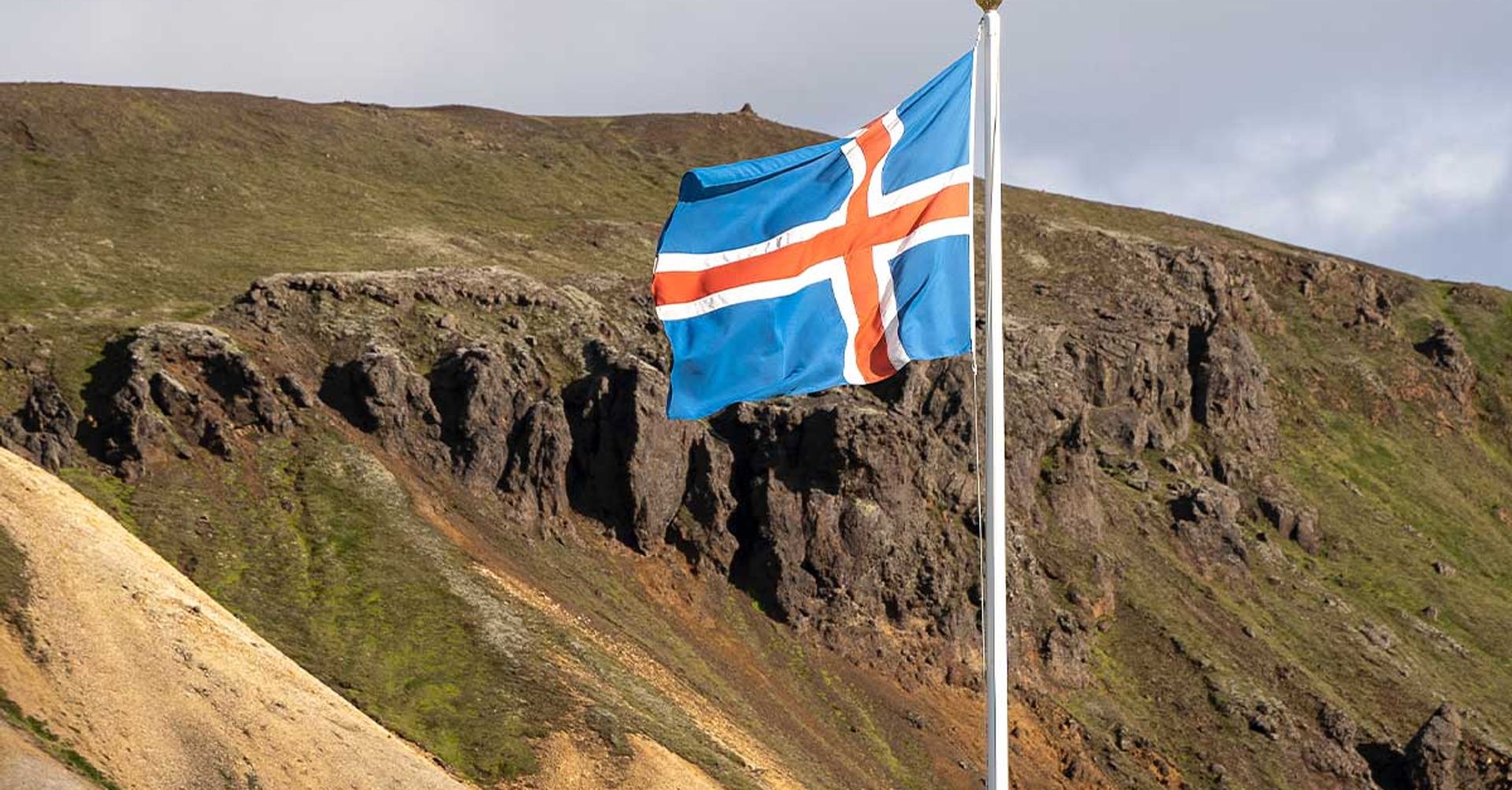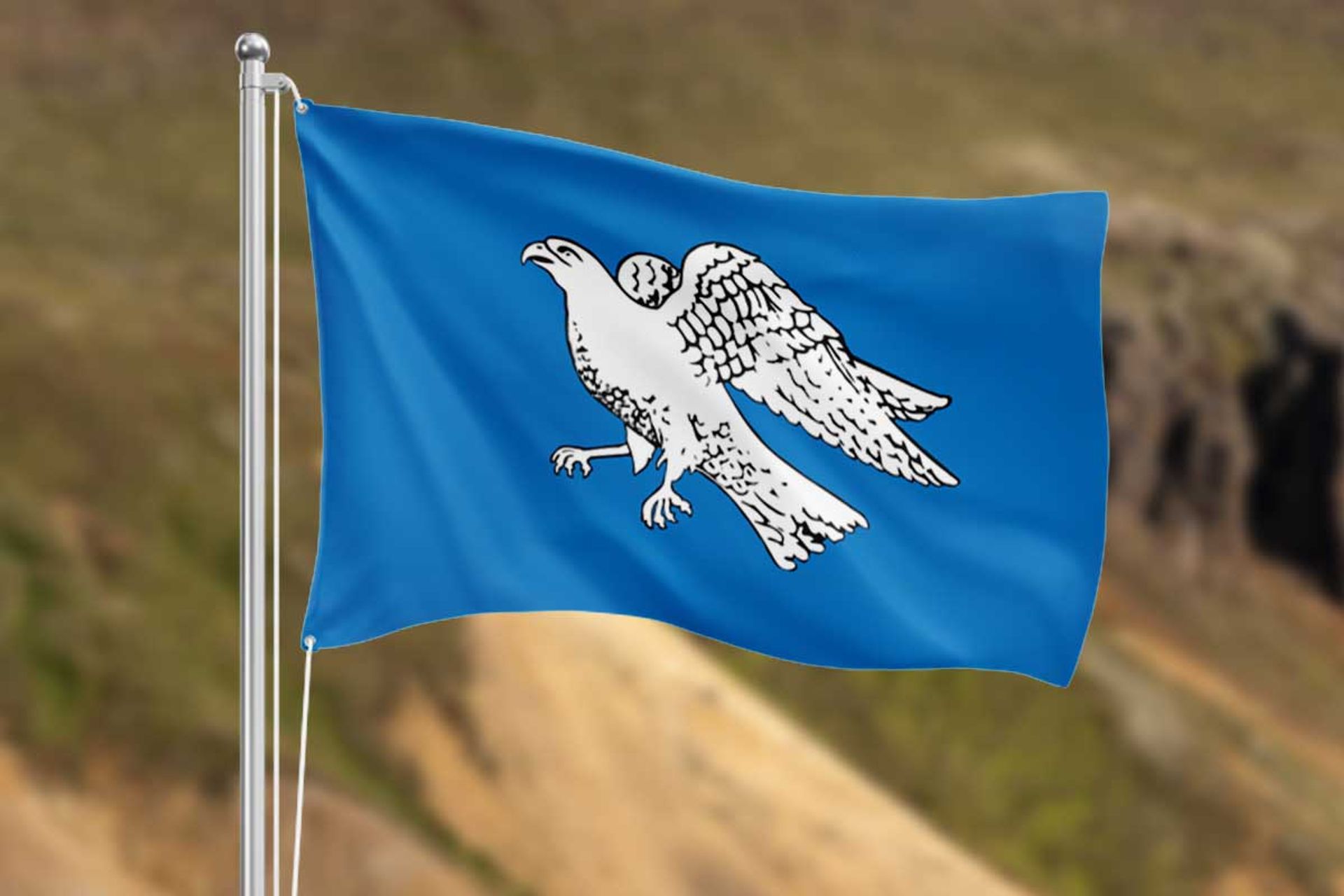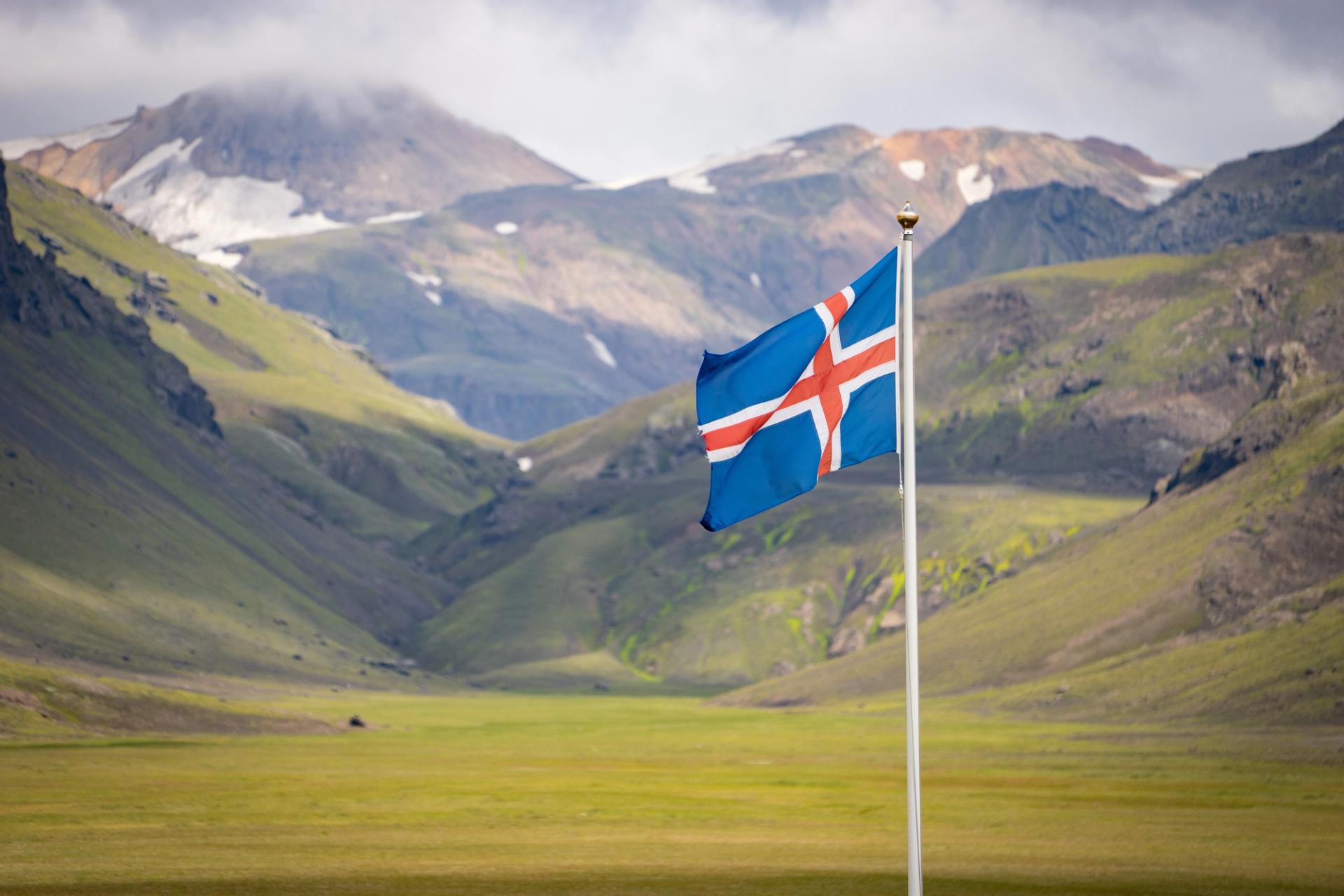 Icelandic Culture
Icelandic CultureAll About the Icelandic Flag
The Icelandic Flag is historic, with beautiful designs that honor the freedom of the country. In this article, we go over the history behind the flag and talk about old designs.
Jump to chapter
The Icelandic Flag is historic, with beautiful designs that honor the freedom of the country. The colors of the Icelandic flag are sky blue, snow white, and fiery red. The blue symbolizes the mountains, the white honors the snow and glaciers, and the bright red stands for the fiery volcanoes. At first, the red solely symbolized Christianity but later local Icelanders stated it is a staple of their volcanic system. The white cross on the flag is Scandinavian and honors the Nordic roots of Iceland. While this is the flag Icelanders commonly know today, it had a long line of history before it became that way.
Jorgen Jorgensen, also known as Jörundur “Hundadagakonungur”, introduced the first Icelandic national flag on July 12th, 1809. It did look quite different than today’s flag. This one was a deep blue with three white codfish in the top left corner. Even though it was a bizarre sight, it did highlight Iceland’s blue waters and one of the country’s main dishes. The flag lasted a short time since Jorgen only ruled Iceland for a few weeks after that.

Fast forward to 1870 when Sigurður Guðmundsson presented the next flag to Iceland. It was very popular with students who were fighting for Iceland’s independence. This flag did not have fish on it, however, it did still have a vibrant blue background. Instead of stripes or colors, this flag had a very large white falcon right in the middle of it. The falcon was a symbol for Iceland rising up and hopefully one day gaining their freedom.

In 1897, the Hvítbláinn flag was introduced during a parade. This one did not have animals or fish on it, in fact, it was very basic, with a captivating design. Featuring an in-depth blue backdrop with a white cross laying across it. It is pretty similar to Iceland’s flag today. Think of it as the first draft of the national flag. Einar Benediktsson, who was a poet, designed it, stating that the white was for snow and the blue for the mountains. You can visit this flag during your next trip to Iceland, by visiting the National Museum Of Iceland. The flag is on display for all visitors to enjoy.

Now onto the main event. In 1906 Matthías Þórðarson designed the current flag of the nation. It was presented at a meeting of the Reykjavík Students' Association on September 27, 1906. Being inspired by Einar Benediktsson's colors, Matthías stated that the blue would continue to represent the mountains. As the white would also still represent the snow. But, he then added red, which now represents the volcanoes. It became the unofficial civil flag in 1913. Finally on June 19th,1915 it was officially the nation's flag. When Iceland was finally separated from the Danish crown, the flag became even more popular, for obvious reasons. It was important that red was added to the flag. Because there was an argument that the previous flag was too similar to Greece. The red made the flag pop and displayed the importance the Icelandic landscapes have in the country.

Iceland has a few other flags that you may spot along your journey. There is the state flag, which is also known as the swallowtail flag. It is the regular national flag design with a swallowtail at the end of it. The “Flag of the President of Iceland”, is the president's flag. This flag is a bit different due to the Icelandic coat of arms being displayed with shield bearers on a white rectangular field.
There are flag rules in Iceland, as well as in many other countries. Flag time being one of them. This rule states that the flag should not be raised before seven o'clock in the morning. It should normally be lowered at sunset and should never be kept hoisted after midnight. Another rule is to never destroy or tamper with a flag. This could result in heavy fines or even jail time.
Today, the national flag is widely known and appreciated by Icelanders everywhere. You can spot the flag throughout the streets on Iceland’s National Day too. A day when everyone in the country comes together, to celebrate Iceland’s independence.
Latest Blog Posts
 Guides
GuidesThe 2022 Eruption of Fagradalsfjall Volcano - An Unforgettable Iceland Volcano Eruption
Iceland has become a top destination for mind-blowing mountain hikes, volcanic hot springs, and icy glaciers. Adventurers flock to the land of fire and ice to experience these thrilling opportunities! So it is no wonder why Iceland's volcanic eruptions attract visitors from all over the world!
 Waterfalls
WaterfallsGuide to Svartifoss Waterfall in Iceland
Svartifoss, or the 'Black Waterfall', is an exquisite natural wonder tucked away in the Vatnajökull National Park of Iceland. Known for its distinctive basalt columns and cascading water, this waterfall is a must-see for nature lovers and travelers.
 Itineraries
ItinerariesTop 11 Must-Visit Volcanic Sites in Iceland
Iceland has over 130 volcanoes located throughout the country, with 30 of them still active today. Some of them are famous for recent volcanic eruptions, while others have not erupted in thousands of years. There are so many notable Iceland volcanoes, it is hard to know which ones you can visit. With the nickname of The Land of Fire and Ice, you know you won’t be disappointed when it comes to Iceland's volcanic sites. Here are our top 11 must-visit volcanic sites in Iceland!